
Scooby-Doo is an American media franchise owned by Warner Bros. Entertainment and created in 1969 by writers Joe Ruby and Ken Spears through their animated series, Scooby-Doo, Where Are You!, for Hanna-Barbera. The series features four teenagers: Fred Jones, Daphne Blake, Velma Dinkley, and Shaggy Rogers, and their talking Great Dane named Scooby-Doo, who solve mysteries involving supposedly supernatural creatures through a series of antics and missteps, while traveling using a brightly colored van called the "Mystery Machine". The franchise has several live-action films and shows.

Captain Caveman and the Teen Angels is an American animated mystery comedy series created by Joe Ruby and Ken Spears and produced by Hanna-Barbera Productions for ABC. The series aired during the network's Saturday morning schedule from September 10, 1977, to June 21, 1980.

Snagglepuss is a Hanna-Barbera cartoon character who debuted in prototype form in 1959 and was established as a studio regular by 1961. A light pink anthropomorphic puma sporting an upturned collar, shirt cuffs, and bow tie, Snagglepuss enjoys the finer things in life and shows a particular affinity for the theatre. His stories routinely break the fourth wall as the character addresses the audience in self-narration, soliloquy, and asides. As originally voiced by Daws Butler, Snagglepuss seeks quasi-Shakespearean turns of phrase. Some of his campy verbal mannerisms became catchphrases: "Heavens to Murgatroyd!", "Exit, stage left!", and using emphatic "even" at the end of sentences.
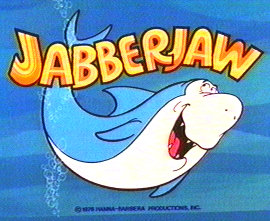
Jabberjaw is an American animated television series created by Joe Ruby and Ken Spears and produced by Hanna-Barbera which aired 16 original episodes on ABC from September 11 to December 18, 1976. Reruns continued on ABC until September 3, 1978.

Dynomutt, Dog Wonder is an American animated television series created by Joe Ruby and Ken Spears and produced by Hanna-Barbera Productions that aired on ABC from September 11, 1976, to October 1, 1977. The show centers on a Batman-esque superhero, the Blue Falcon, and his assistant, Dynomutt, a bumbling, yet effective robotic dog who can produce a seemingly infinite number of mechanical devices from his body. As with many other animated superheroes of the era, no origins for the characters are ever provided.

Pixie and Dixie and Mr. Jinks is one of the three segments of The Huckleberry Hound Show. This show was produced by Hanna-Barbera Productions between October 2, 1958, and October 13, 1961, and consist of 57 episodes.

Hong Kong Phooey is an American animated television series produced by Hanna-Barbera Productions and originally broadcast on ABC. The original episodes aired from September 7 to December 21, 1974, and then in repeats until 1976. The show was brought back in reruns in 1978 and 1981, and was included in the USA Network's Cartoon Express block throughout the 1980s. The main character, Hong Kong Phooey, is the clownishly clumsy secret identity of Penrod "Penry" Pooch, an anthropomorphic dog working at a police station as a "mild-mannered" janitor under the glare of Sergeant Flint, nicknamed "Sarge".

Snooper and Blabber is one of the three segments from The Quick Draw McGraw Show. This show was produced by Hanna-Barbera Productions between September 19, 1959 and October 20, 1961, and consists of 45 episodes.

The Mumbly Cartoon Show is an American animated television series produced by Hanna-Barbera Productions and featuring the titular character, Mumbly, a cartoon dog detective. It was broadcast on Saturday mornings on ABC from September 11, 1976 to September 3, 1977 as part of The Tom and Jerry/Grape Ape/Mumbly Show. This compilation packaged reruns of the 1975 The Tom and Jerry/Grape Ape Show with Mumbly as a new component.

The Peter Potamus Show is a 1964–1966 animated television series produced by Hanna-Barbera and starring Peter Potamus, a purple hippopotamus.
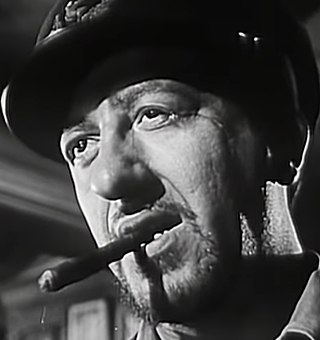
Henry Corden was a Canadian-born American actor, best known for assuming the voice of Fred Flintstone after the death of Alan Reed in 1977. His official debut as Fred's new voice was in a 1965 Hanna-Barbera record, Saving Mr. Flintstone, although he had previously provided the singing voice for Reed in the 1966 theatrical film The Man Called Flintstone and the Hanna-Barbera specials Alice in Wonderland or What's a Nice Kid like You Doing in a Place like This? (1966) and Energy: A National Issue (1977). He took over the role as Fred Flintstone full time starting with the syndicated weekday series Fred Flintstone and Friends for which he provided voice-overs on brief bumper clips shown in-between segments.

Yakky Doodle is a cartoon duck created by Hanna-Barbera Productions for the 1961 series The Yogi Bear Show. Yakky's name is a spoof of "Yankee Doodle".
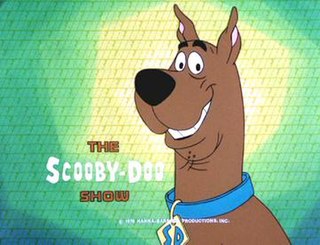
The Scooby-Doo Show is an American animated mystery comedy series. The title of the series is an umbrella term for episodes of the third incarnation of Hanna-Barbera's Scooby-Doo franchise. A total of 40 episodes ran for three seasons, from 1976 to 1978, on ABC, marking the first Scooby Doo series to appear on the channel. Sixteen episodes aired as segments of The Scooby-Doo/Dynomutt Hour in 1976, while eight aired as part of Scooby's All-Star Laff-A-Lympics in 1977. A final set of sixteen episodes came out in 1978, with eight running individually under the Scooby-Doo, Where Are You! name and the remaining eight as segments of Scooby's All-Stars.

Cindy Bear is a cartoon character created by Hanna-Barbera Productions. She is one of the primary supporting characters of the Yogi Bear franchise as well as a regular in the stable of frequently appearing Hanna-Barbera animated personalities. Cindy was originally portrayed by voice actress Julie Bennett, who reprised the part for most of the character's appearances from the 1960s through the 1980s.

John Francis Smith, more commonly referred to as Ranger Smith, is a fictional park ranger first appearing in the 1958 Yogi Bear cartoon series. The character is Yogi's main antagonist, and appears in other Yogi Bear series, including Yogi's Gang (1973), Yogi's Treasure Hunt (1985), and Yo Yogi! (1991), as well as the 2010 live-action Yogi Bear film. The cartoon character has been primarily voiced by Don Messick and Greg Burson.
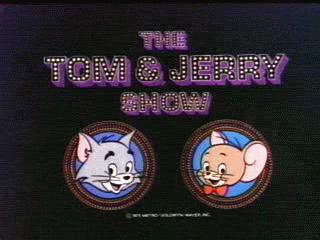
The Tom & Jerry Show is an American animated television series produced by Hanna-Barbera Productions in association with MGM Television. Based on the Tom and Jerry theatrical cartoon series, which was created by H-B co-founders and former MGM cartoon studio staff William Hanna and Joseph Barbera, the show originally aired on ABC from September 6 to December 13, 1975 as the first half of The Tom and Jerry/Grape Ape/Mumbly Show, with The Great Grape Ape Show representing the series' second half and The Mumbly Cartoon Show representing the series' third half. This series marked the first time that Tom and Jerry appeared in animated installments produced specifically for television.

Magilla Gorilla is a fictional gorilla and the star of The Magilla Gorilla Show by Hanna-Barbera that aired from 1963 to 1965.
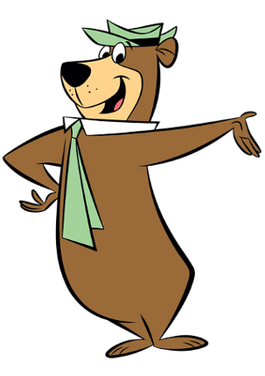
Yogi Bear is an anthropomorphic animal character who has appeared in numerous comic books, animated television shows, and films. He made his debut in 1958 as a supporting character in The Huckleberry Hound Show.

Scooby's All-Star Laff-A-Lympics is a two-hour Saturday morning animated program block produced by Hanna-Barbera Productions and broadcast on ABC from September 10, 1977, until September 2, 1978.

Laff-A-Lympics is an American animated comedy television series produced by Hanna-Barbera Productions. The series premiered as part of the Saturday-morning cartoon program block Scooby's All-Star Laff-A-Lympics, which consists of 24 episodes, on ABC on September 10, 1977. The show is a spoof of the Olympics and the ABC primetime series Battle of the Network Stars, which debuted one year earlier. It featured 45 Hanna-Barbera characters organized into teams which competed each week for gold, silver, and bronze medals. In each episode, the Really Rottens would try in each event to cheat only to get caught by Snagglepuss each time. One season of 16 episodes was produced in 1977–78, and eight new episodes combined with reruns for the 1978–79 season as Scooby's All-Stars. Unlike most cartoon series produced by Hanna-Barbera in the 1970s, Laff-A-Lympics did not contain a laugh track. Scooby’s Laff-a-Lympics was originally owned by Taft Broadcasting; Warner Bros. Domestic Television Distribution currently owns the series through its two in-name-only units, Warner Bros. Family Entertainment and Turner Entertainment.



















